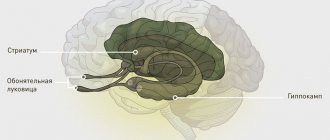Emotions accompany a person every second of his life. Sometimes they turn out to be pleasant and serve a supportive function, and sometimes they completely take over the entire thought process, making it impossible to adequately perceive reality. And in each individual case we are talking about the interaction of emotions and intellect. However, there is also such a thing as “emotional intelligence”.
Intelligence is a person’s ability to think, solve problems, process information and use new experiences for self-development. While emotions are responsible for changes in mood that are caused by external factors and stimuli. For example, bad news causes irritation and anxiety in a person, and upcoming good events invariably cause excitement. All these are factors to which the human body adapts.
A person can not be led by emotions and use them for his own benefit thanks to emotional intelligence. This term (from the English emotional intelligence) means a person’s skill in which he is aware of emotions, can manage them and even read them from himself to everyone who is part of his daily environment.
Emotional intelligence as a concept
The concept of emotional intelligence was introduced in the late 90s by US psychologist Daniel Goleman. But even before the official recognition of this term, there was also the term “social intelligence”, which meant the ability of people to adapt to their environment and calmly perceive their interlocutors, being able to hide some emotions and see what the mood of others is.
Research conducted by Goleman has shown that people who have developed emotional intelligence have good mental health, have leadership skills and are highly effective workers. At the same time, emotional intelligence is responsible for leadership skills. In professions that are directly related to stress, the ability to cope with one’s own emotions and high emotional intelligence are sometimes valued above any other knowledge.
“Change your attention and you change your emotions. Change your emotions and your attention will change.”
Frederick Dodson
What does emotional intelligence mean in psychology?
Today, thousands of experts consider emotional intelligence as one of the most powerful human abilities. It can be easily corrected and developed, even if initially poorly developed.
Throughout the psychological research of the 20th century, several theories about emotional intelligence have appeared. The creators, leading psychologists in the world, described the main factors that are responsible for the symbiosis of intelligence and emotional state.
Goleman's model of emotional intelligence
Daniel Goleman divides emotional intelligence into 4 components:
- Self-awareness. This is a skill that allows you to analyze human emotions and intuition. This is an awareness of which aspects of the personality are considered strong, and where the limit of possibilities is. In addition, self-awareness is characterized by a feeling for oneself and a real appreciation of one’s talents.
- Self-control. This component of emotional intelligence includes the ability to take control of destructive emotions and impulses. People with self-control are able to quickly adapt to any situation, know how to seize opportunities, have reliability and honesty, and the ability to positively assess current events.
- Social sensitivity. This component manifests itself in a special talent - to hear the feelings of others, to take their place and take part in their lives and help them. For people who are in leadership positions, sensitivity is also manifested in understanding the hierarchy in the team and the ability to satisfy the requirements of customers or subordinates
- Relationship management. This component of emotional intelligence is characterized by a trait in which a person motivates others and can force anyone to follow him. Such people have the gift of persuasion, the ability to quickly resolve disagreements in a team, maintain social connections and create teams of like-minded people.
Read more: Self-affirmation - I am, I am worthy, I can!
Goleman's model shows how important it is to encourage a person to develop his personal qualities, which subsequently contribute to achieving success in many areas.
Emotional intelligence in the Mayer-Salovey-Caruso model
US specialists Mayer and Salovey Caruso have developed their own model of emotional intelligence. Work on it has been going on for many years. But the result was a new theory that includes four components.
- Emotion assessment and perception. The authors of the concept believe that this is the essence of the development of emotional intelligence, which lies in the ability to distinguish between emotions and understand their content. To confirm their theory, psychologists gave an example of the expression of sadness or happiness on the faces of other people. These expressions are the same for all people, which means they can be recognized. Children's emotions are easy to read because they have not yet learned to hide them. Adults try to hide all emotional manifestations, but microexpressions can still give them away.
- Using emotions for self-efficacy. According to psychologists, this component consists of recognizing the power of emotions and using them to your advantage. A person learns to maintain concentration on his main tasks. With a positive attitude towards them, a person begins to work more effectively. Even a person's brain becomes more active if a person has a positive attitude.
- Understanding the emotional background. This is a person’s ability to see the cause and source of a particular emotion, to realize the difference between thoughts and emotional impulses and emotions. According to the authors of the concept, it is important for a person to learn to perceive any emotion as a data carrier. If a person is constrained by fear, he can choose how to react to it - attack, freeze with fear, or run away from it. Some emotions can be transformed. A person can also notice how to change the sensory mood with the power of thought
- Emotional background assessment. It consists in the fact that a person uses emotions as steps to achieve personal results. But in order to begin to control the emotional mood, both your own and that of other people, you need to be in a constant state of awareness; it will allow you to remain calm and observant.
In psychology, emotional intelligence is considered along with another concept that studies the relationship between the mind and emotions. It is called the emotionality coefficient, or emotional quotinent. It was introduced by psychologist and journalist Ruven Bar-On.
The scientist presented a whole structure, which consists of a symbiosis of features. All of them together become the determining factor in how a person will behave in the future. Bar-On took IQ as an example and designated the emotionality factor with the letters EQ.
The Ruven Bar-On model includes several main components:
- self-knowledge;
- people interaction skills;
- the ability to adapt to different circumstances;
- the ability to easily get out of stressful situations;
- ability to control mood.
Emotions - how emotional intelligence works
The level of energy development is determined by the level of motives and emotions. If an individual does not have the required amount of energy, then he cannot do much, no matter how intelligent, competent or conscientious he is. Emotional intelligence is understood as the ability to process information contained in emotions. By knowing and understanding emotions, you can manage them. Another aspect of emotion management is the ability to produce emotional states that lead to success.
According to the ideas of the authors of the original concept of emotional intelligence, Meyer, Salovey and Caruso, emotional intelligence is a group of mental abilities that contribute to awareness and understanding of one’s own emotions and the emotions of others. Emotional intelligence is considered a subset of social intelligence that involves the ability to observe one's own and other people's emotions, differentiate between them, and use this information to guide thinking and action.
The principles of emotional intelligence (EI) are associated with characteristics such as empathy, awareness, balance, and responsibility.
Empathy is a key emotional ability. To experience empathic reactions means to identify with the feelings of another person and thus empathize or sympathize with him. Empathy involves recognizing emotions, being sensitive, understanding, and expressing empathic experiences. Research shows that as empathy increases, the ability to recognize emotions in facial expression, color, and abstract images improves. The development of empathic responses is associated with increased emotional literacy, which helps a person accurately identify and interact with their feelings.
Awareness. To maintain emotional balance, or, in layman's terms, to feel happy, you need to be competent in your own feelings. To do this, you need to be able to distinguish their shades and nuances, distinguish between productive and unproductive feelings - all this should be done in a “real format”, that is, exactly when they are experienced. In the course of individual development, a person forms his own “dictionary” of emotional states, learns to express not only experiences, but also their intensity, and masters the understanding of his experiences and the emotional states of other people.
Equilibrium. The experience of a person’s emotional life is stored in the subcortical regions of the brain, i.e., in the so-called visceral brain. The neocortex, as a rational brain, analyzes and evaluates situations, determines the possibility of risk or reward. The basic principle of EI theory is that people with high emotional intelligence are able to balance the functioning of two areas of the brain that interact with each other.
Responsibility. A person with a high level of EI is responsible for his own well-being. Emotions prompt him to make a certain choice, which entails certain actions, this or that behavior. Making a decision is taking responsibility for your actions. An individual acts responsibly if he does not harm either himself or others, controls his own assessments, thoughts, regulates emotions, accepts responsibility for the possibility of happiness and does not blame others for his misfortunes, establishes safe boundaries for coexistence, recognizes his emotions and emotions others and deal with their feelings honestly and openly.
In accordance with these ideas, emotional intelligence is understood as the ability to process information contained in emotions.
Integrative approach by K. Izard
The key point of the integrative model of emotional intelligence is the combination of several specific abilities into an integrative indicator of emotional intelligence. In particular, the Izard Test of Emotional Knowledge asks subjects to associate emotions with situations (for example, sadness - “your best friend is leaving”) and identify emotions in facial expressions. This allows us to define an interactive measure of EI that focuses on the perception and understanding of emotions. The Izard test measures emotional intelligence in children aged 3-4 years. However, the test author at times prefers to talk about emotional knowledge as opposed to emotional intelligence.
Meyer, Salovey, and Caruso note that psychology often refers to the ability-knowledge continuum. On one side of this continuum are the abilities to reason and learn, on the other are knowledge, that is, what a person has actually learned. When we assess the level of intelligence, it is difficult for us to separate it from knowledge. Intelligence tests emphasize breadth and rate of learning, as well as problem-solving ability. Whereas knowledge tests evaluate acquired knowledge.
D. Goleman's model
According to Goleman, the structure of emotional intelligence includes five components:
- identifying and naming emotional states, understanding the relationships between emotions, thinking and action;
- management of emotional states - control of emotions and replacement of unwanted emotional states with adequate ones; the ability to enter emotional states that promote success;
- the ability to read, be sensitive to, and manage the emotions of others;
- the ability to enter into and maintain satisfying interpersonal relationships with others. Goleman's structure of emotional intelligence is hierarchical.
Thus, identifying emotions is a prerequisite for managing them. At the same time, one aspect of managing emotions is the ability to reproduce emotional states that lead to success. These three abilities, addressed to other people, determine the fourth: to make contact and maintain good relationships.
Subsequently, the scientist refined the structure. Currently, it includes four components: self-awareness, self-control, social understanding and relationship management, and in relation to different categories of people this structure differs somewhat. Thus, the author recommends teachers to develop the following abilities:
- understanding one’s own emotions (recognizing one’s own emotions, understanding the sources of feelings, recognizing the differences between feelings and actions);
- control of one’s own emotions (tolerance of frustrating events, anger management, avoiding insults and humiliation, expressing anger without emotional outbursts, avoiding internal and external aggression; having positive feelings towards oneself, school, family; stress management, overcoming loneliness and social anxiety) ;
- self-motivation (responsibility, task focus, non-impulsive behavior, etc.);
- understanding the emotions of others (empathy, understanding others' perspectives, listening);
- social skills (understanding others, competent conflict resolution, solving interpersonal problems, competent communication, ability to be popular, open, friendly, involved, etc.)
More on the blog: Who really controls your life? 5 questions to help you understand this
In developing the emotional intelligence of leaders, Goleman recognizes the following components and associated skills as important:
Personal skills:
Self-awareness:
- Emotional self-awareness: analyzing our own emotions and being aware of the impact on us; using intuition when making decisions.
- Accurate self-assessment: understanding your own strengths and limits.
- Self-confidence: self-esteem and adequate assessment of one’s talents.
Self-control
- Curbing emotions: the ability to control destructive emotions and impulses.
- Openness: showing honesty and integrity: trustworthiness.
- Adaptability: Flexible adaptation to changing situations and overcoming obstacles.
- Will to Win: A persistent drive to improve performance to meet internal quality standards.
- Initiative: willingness to take action and the ability to not miss opportunities.
- Optimism: the ability to look at things positively.
Social Skills:
Social sensitivity:
- Empathy: the ability to listen to other people's feelings, understand their position and actively show concern for their problems.
- Business Awareness: Understanding of current events, hierarchies of responsibility and politics at the organizational level.
- Respectfulness: The ability to recognize and satisfy the needs of subordinates, clients, or customers.
Relationship management.
- Inspiration: the ability to lead by painting an exciting picture of the future.
- Influence: mastery of a range of persuasion tactics.
- Self-improvement support: Encouraging others to develop their abilities through feedback and guidance.
- Facilitating change: the ability to initiate change, improve management practices, and lead employees in new directions.
- Conflict resolution: resolving disagreements.
- Strengthening personal relationships: cultivating and maintaining social connections.
- Teamwork and collaboration: interacting with other workers and building a team.
Model R. Bar-On
An even broader understanding of emotional intelligence is contained in the model of R. Bar-On. The author defines EI as all non-cognitive abilities, knowledge and competence that enable a person to successfully cope with various life situations. Bar-On identifies five areas of competence that can be identified with the five components of emotional intelligence. Each of the five components of EI contains several subcomponents:
- self-knowledge, awareness of one’s emotions, self-confidence, self-esteem, self-actualization, independence;
- interpersonal skills, empathy, interpersonal relationships, social responsibility;
- adaptability: problem solving, connection with reality, flexibility;
- management of stressful situations: resistance to stress, control of impulsivity;
- Prevailing mood: happiness, optimism.
The place of emotional intelligence in the structure of personality
The most “venerable”, but still influential, system of basic components is the “trilogy -of-mind”, which dates back to 1750. It includes motivation, emotions and cognitions. Later, psychological science was replenished with other similar systems, including S. Freud’s personality structure, J. Singer’s system of public and private personality, and, finally, Meyer’s System of Basic Components.
The structure proposed by Meyer is based, in the opinion of its author, on the most advanced of the previous systems of main components. In the so-called System Set of Primary Parts, the author identifies four main parts.
"Energy Development"
(Energy Development). Mental energy can be defined as the potential mental activity of a person that is stimulated to function by psychological means. People activate it to think and act. If an individual does not have the required amount of energy, then he cannot do much, no matter how smart, competent or conscientious he is.
The level of energy development is determined by the level of motives and emotions. When motivation increases, a person feels the energy needed to take action. The same is the effect of a coordinated increase in the intensity of emotions. At the same time, the energy for action increases so much that sometimes you have to restrain it.
Strengthening or weakening, emotions control motives. For example, the emotion of anger activates the motivation of aggression. The emotion of love, connecting with the motives of affiliation, strengthens them. Sadness supports the desire for isolation. Emotions arise at “appropriate moments” (to enhance or weaken motivation) because they are internal signals of individual progress in the social world. For example, friendly support increases feelings of happiness, which in turn increases the intensity of affiliation motivation. Anger increases in response to injustice and can contribute to an aggressive response.
Thus, “Energy Development” is dependent on motives and emotions acting together. Energy is directed towards achieving specific goals. These goals are represented in mental models of how the world “works” and how to get the things we need in life.
"Knowledge Management"
(Knowledge Guidance). The external reality of daily perceptions is more complex than what we perceive. Our thoughts about the river are not the river itself. If we misunderstand the physical reality of the river, we can drown in it. Instead of the external reality of the house, we use an incomplete internal representation of it. A six-year-old child knows the following about home: where to hide, where mom, dad, sister or brother are most often located, where to find food. Mother and father know everything about home appliances, square footage, mortgages and how to pay for them. The historian may have information about the age of the house and the participation of its owners in political movements. These mental models serve the interests of their creators, but never capture all the information about the house. Reality is always richer than ideas about it. Two people can have essentially different models of complex being, and each of them will be legitimate. This is especially true in the world of ideas.
Our models are not only incomplete, they may be incorrect and biased. We distort things by approaching them from our own perspective. Sometimes the distortion reaches extreme levels. For example, the thinking style of a paranoid person is such that he inevitably seeks out ill will. Since all information received from the outside is ambiguous, this person finds confirmation of his judgments.
What motivates us to achieve always involves our models of reality. The more accurately the models reflect the external world, the more satisfactorily the individuality system operates. Poor or incomplete models lead to emotional frustration. Thus, if a lover is inclined to love not the object of his love, but his idea of it, this can lead to severe disappointment.
More on the blog: What is it made up of and how does it manifest itself - Mutual Understanding
On the contrary, good models contribute to success even with weak mental energy. A low-energy person who knows exactly what he wants and how to achieve it can move toward success very effectively. Moreover, the better these models, the more worthy they are rewarded by society.
"Execution of actions"
(Action Implementation). Individual intellectual life takes place in an inner world of mental models that differ from reality. Mental energy attaches itself to internal mental models that correspond to actual goals, the achievement of which in the external world allows the corresponding needs to be satisfied. Once these goals are identified, the mental system must plan actions to achieve them.
Actions are carried out at various levels of difficulty. At the lowest level - motor skills and actions, more or less automated, then - more complex skills (for example, social).
With energy and diverse knowledge, success is possible even with minimal social skills. Thus, the performer, knowing what he wants, can achieve it, even if he acts rudely and impolitely towards others. However, a “motivational genius” will be more effective if he knows how to make friends and behaves appropriately in social situations. Let's imagine a situation where a preschooler wants to join a game. A child with more developed social skills will say: “You, Sasha, are a grandfather, and you, Masha, are a grandmother? Okay, I’ll be a turnip, what are we going to do next?”, and his peer with a low level of social skills may hesitantly say: “Mom bought me new shoes.”
Some people may achieve high levels of awareness and skill but have low levels of mental energy. At the same time, knowing what and how to do, they do not put their actions into practice.
"Conscious self-regulation"
(Conscious Self-Regulation). Mental energy can grow, connect with appropriate mental models, and engage in making plans to achieve goals with minimal awareness. Thus, a person accustomed to regular trips to work drives a car with minimal concentration on the surrounding area. Sometimes such actions can proceed distortedly. For example, a woman on a diet may find herself at the refrigerator opening a jar of chocolate cream.
Human existence is characterized by the ability for internal observation, review and intervention, called conscious self-regulation. We have sensitivity, that is, we have the ability to feel alive, existing, to concentrate on what we think and do. This is awareness that asks us the questions: “Who will I be?”, “What will I become?” and “How am I changing?”
The development plan for each individual is different, since the inclinations, skills, qualities, social environment, and culture are different. The individual, compared to other biological and social systems around him, is a relatively weak system, "at the mercy of an ocean of possible dangers or current events and influences." Its improvement depends in part on the individual context. A person can develop in accordance with his motives, skills, desires, according to the requirements of society, the general spirit of the times, religion or philosophy.
Each substructure of personality can be improved, resulting in different benefits. For example, improving energy development contributes to the development of motivation, the realization of existing needs and the development of effective emotional reactions to the situation. Optimization in knowledge management through education allows us to create more accurate models of the world. With regard to the execution of actions, each person must have suitable opportunities to express his essence socially. Developing self-control involves suppressing destructive impulses, developing the ability to patiently restrain actions until the necessary information is collected and a decision is made about what should really be done.
Emotional intelligence and emotional competence
The concept of emotional competence (EC) was introduced in the context of developmental psychology by K. Saarni. Emotional competence is conceptualized as the unity of three aspects: “I” identity, character and developmental history. Saarni presents EC as a set of the following eight abilities or skills:
- awareness of one's own emotional states;
- ability to discern the emotions of others;
- the ability to use emotions and forms of expression accepted in a given culture (or subculture), and at more mature stages to assimilate cultural scripts and associate emotions with social roles;
- the ability to engage sympathetically and empathetically in the experiences of others;
- the ability to recognize that the internal emotional state does not necessarily correspond to the external expression of both the individual and others, and at more mature stages, the ability to understand how the expression of one’s own emotions affects others, and to take this into account in one’s own behavior;
- the ability to cope with one’s negative experiences using self-regulation strategies that minimize the intensity or duration of such experiences (relieve the “severity of the experience”);
- awareness that the structure or nature of relationships is largely determined by the way emotions are expressed in relationships: spontaneity, authenticity of expression, emotional reciprocity or symmetry in relationships;
- the ability to be emotionally adequate, that is, to understand one's own emotions, no matter how unique or culturally determined they may be, and to correspond to one's own ideas about one's own emotional balance.
Thus, emotional competence can be defined as a set of knowledge, skills and abilities that allow one to make adequate decisions and act based on the results of intellectual processing of external and internal emotional information. The development of emotional competence is based on a combination of genotypic factors and practical activities that contribute to the accumulation of experience in analyzing emotional situations.
Author: Irina Nikolaevna Andreyeva , candidate of psychological sciences, associate professor, doctoral student of the Department of Psychology, Faculty of Philosophy and Social Sciences of the Belarusian State University, Associate Professor of the Department of Technology and Teaching Methods of Polotsk State University.
Source
Read us in a convenient Telegram | Facebook | Instagram | Tags
Why emotional intelligence is important
Self-control in a world where a person is constantly accompanied by stress is a very important property. But many people get stuck at a level where emotions take precedence over reason, depriving a person of the ability to reason sensibly. And if children can be taught from infancy the skills of understanding feelings and managing emotions, then developing the emotional intelligence of adults is a more labor-intensive process. And it is important to start with the separation of feelings and emotions.
Read more: Conversation method in psychology
| Emotions | Feelings |
| An emotion is a short-term impulse with which a person reacts to external stimuli. Minor troubles cause equally minor outbursts of emotions. They flare up like a match and instantly burn out, giving way to other emotions. | Feelings are a long-term and stable attitude towards a phenomenon or person. Feelings tend to establish a close emotional attachment to an object or phenomenon, which can last for quite a long time. |
| Emotions cannot always be understood. Sometimes a person cannot understand exactly what emotion he is feeling. Often this is a whole set of different shades of the same condition. | Feelings always have a clear awareness and description. A person always understands that friendship is friendship, happiness is happiness, and love is love. |
| Emotions are difficult to hide and control. An unexpected outburst of anger or fear is sure to be reflected on the face, even if the person does not want to show it. | Feelings arise in the depths of consciousness and exist there, invisible to others. A person can hide and control them. |
Components of emotional intelligence
When starting to study your own emotional intelligence, it is worth remembering that it is divided into two types: intrapersonal and interpersonal intelligence.
Intrapersonal intelligence
Essentially, this is a series of characteristics by which one can determine how a person treats himself:
- Self-awareness is the search for one’s personal abilities, awareness of the strengths and weaknesses of personality that affect others.
- Self-regulation. It lies in the ability to manage your emotional states and be able to focus on them. In addition, this skill allows you to quickly cope with stress and find solutions to complex issues.
- Self-motivation. This is the ability to recharge internally to achieve goals and the ability to maintain strength, perseverance and a positive mood when achieving a goal.
- Self-reinforcement. It consists of a good perception of oneself under any circumstances. The ability to praise yourself, your own personality and come up with rewards for yourself, always keeping a positive attitude in life in your soul.
Interpersonal or intrapersonal intelligence
This is, in fact, a whole set of skills and various abilities that form a person’s relationship with others. Basic skills:
- Empathy. It lies in the ability to hear and understand the emotions of others, to understand the motives of actions and to empathize with them. Empathy allows you to suppress conflicts before they arise. This skill is not innate; it is taught from childhood. Mandatory conditions for its development are to perceive people as they are, while being able to imagine oneself in the role of another person, without dissolving in him and maintaining one’s own individuality.
- Social skills. They allow you to positively communicate with other people, regardless of their assessments, without succumbing to rumors and their attempts to change your own decision. Also, these skills allow a person to maintain a positive attitude towards himself and protect his own interests in a conflict situation.
Lessons on developing emotional intelligence
After studying a large number of books and textbooks, we came to the conclusion that emotional intelligence can be increased by studying the theory and applying it in practice. We have developed five lessons for you that will help you learn to understand your own emotions and the emotions of other people.
The purpose of the course: to introduce our reader to emotional intelligence, its models and the necessary skills for its development and improvement.
The objective of the course: to teach the reader to manage his emotions and develop his skills of empathy, assertiveness and listening skills.
We present to your attention a short overview of each of the lessons.
In order to become enthusiastic about improving your emotional intelligence, the reader must understand the importance of this skill. Throughout the existence of mankind, people have needed certain skills and abilities to survive. They changed from century to century
From the editor: Types of perception: auditory, visual, kinesthetic and their characteristics
In the era of the Internet and developed communications, both the person himself and the demands that society places on him have changed. In the first lesson, you will understand why in the 21st century, emotionally intelligent people are more successful than those who focus on technical skills. We will also compare emotional intelligence with IQ and find out what the advantages and disadvantages of focusing on one model of thinking are.
They changed from century to century. In the era of the Internet and developed communications, both the person himself and the demands that society places on him have changed. In the first lesson, you will understand why in the 21st century, emotionally intelligent people are more successful than those who focus on technical skills. We'll also compare emotional intelligence to IQ and explore the advantages and disadvantages of focusing on one mental model.
Despite the fact that psychologists and scientists began studying emotional intelligence several centuries ago, the theory flourished in the twentieth century. Each researcher proposed his own concept and there is no clear understanding of what specific skills and abilities need to be developed to improve it. The truth, as we know, is in the middle, and one learned skill invariably improves all the others. In this lesson, we will look at the most popular models of emotional intelligence and present several tests that show your current level.
A theory will remain a theory unless we make conscious attempts to raise our emotional level. The higher it is, the happier and more satisfied with life you become. In the third lesson we focus less on theory and more on the practical part. We will offer some really useful exercises and give useful tips. Implement them in life, for this you do not need to do anything special, since we experience emotions every second and can work on them now. You will also understand the importance of mindfulness and the ability to control reactionary thoughts.
In fact, you don’t need much to be happy. You need to find a business that you want to do all your life, feel that your work is needed by society and achieve your goals. The challenge is learning to look at life with hope and faith and motivating yourself to wake up every morning with a smile and determination to make the most of your day. In this lesson we will teach you to look at life with optimism. This means not only seeing the good side of any problem, but also taking action to solve it. We will touch on positive psychology and the power that positive thinking brings. You will be surprised how easy and at the same time difficult it is to change negative thoughts to positive ones. And when you achieve success, you will learn to control your emotions and use them to achieve success.
Levels of Emotional Intelligence
Each person’s level of emotional intelligence depends on the conditions of growing up, upbringing and family relationships. There can be no average values here. That is, intelligence can be either high or low. These levels are determined using the following characteristics.
A person with high emotional intelligence:
- is aware of his own emotions and can interpret them;
- knows how to behave in such a way that his emotions do not hurt others;
- strives to develop and develop inner peace;
- knows how to create a motivational mood.
Read more: Self-analysis in human life
A person with low emotional intelligence:
- not confident in one's abilities;
- irritable and conflicted;
- does not know how to restrain emotions;
- strives to keep everyone and everything under control.
If characteristics from the second list predominate in a person’s life, this is a clear signal to begin developing oneself.
Remember
- For career success, knowledge, intelligence and the ability to predict the future are not enough. Experts believe that the hallmark of business leaders is strong emotional intelligence.
- Emotional intelligence is the sum of a person's skills and abilities to recognize emotions, understand the intentions, motivations and desires of others and their own, as well as the ability to manage their own emotions and the emotions of others in order to solve practical problems.
- Emotional intelligence is not the ability to be nice and cheerful. According to Daniel Goleman, the level of emotional intelligence depends on the development of 12 key competencies in 4 areas: self-awareness, self-management, social awareness and relationship management.
- Analyze them, honestly assess your strengths and weaknesses and find areas of growth.
Increase your competencies with us in trainings on the development of emotional intelligence and negotiations.
Study at a convenient time and anywhere! Follow our updates:
Ivan Ilyin Chief Editor of the Russian School of Management
How to use emotional intelligence
High emotional intelligence allows a person to control the entire sensory and emotional component of life. In this way, a certain balance arises. It allows a person to achieve results in all areas of life, while maintaining a sense of stability, good relationships with others and a positive attitude.
Possessing emotional intelligence allows you to keep all events and circumstances in life under control. There is a simple way to check whether this level is high. People exhibiting high EQ exhibit:
- confidence;
- curiosity;
- awareness of intentions;
- self-control;
- creativity;
- the ability to maintain communication, improve connections with people, develop empathy and love for others.
With these skills, you can use emotions as a tool to build connections and improve your sense of self.
Emotional Intelligence Training
If a person still finds it difficult to control emotions, and some skills leave much to be desired, then you can independently develop emotional intelligence. To do this, you need to divide self-study into several stages.
- Study of emotions. At the first stage, it is important to understand what emotions are, how they arise, how they develop, and how they can be used for your benefit.
- Understanding the location of emotions. This stage takes quite a lot of time, but allows a person to learn to listen to himself and his own body. It often gives clues as to what kind of emotion a person is experiencing. For example, fulfillment is reflected in the chest, and anger can cause a headache.
- Regulating emotions. At the third stage, you need to learn to manage your emotions. Constant training will help with this. Chief among them is observing yourself in different situations. It is important to remember your behavior and try to change it if it is destructive.
- Learning to interact with society. This stage is mainly about developing empathy. That is, the skills of empathy for others and their support.
Managing emotions effectively requires constant practice. Various methods of developing emotional intelligence and exercises will help with this.
- Working with the body. This method allows you to control your own emotions with the help of your body, unnoticed by others. For example, clench and unclench your fists, or stand on your tiptoes several times. When it is difficult to contain emotions, these methods will help to quietly cool down the ardor and maintain calm.
- List of problems. This technique involves making a list of all the troubles that have been bothering you lately. After completing the list, you need to start solving everything written. As you decide, emotions will gradually recede into the background, and a positive attitude towards life will become the main feeling.
- Emotional motivator. This practice is designed for those who do not get along well with others. It consists of compiling a list and further implementing various methods of maintaining the spirit of excitement and fun in the team. Even if a person was previously closed and complex, then for further development it is worth taking the first step and gradually starting to open up.
Olga Figura
Concept and structure of emotional intelligence
Andreeva, I.N. Concept and structure of emotional intelligence / I.N. Andreeva
// Social and psychological problems of mentality: 6th International scientific and practical conference. – Smolensk, SSPU, 2004. – Part 1. – P. 22–26.
In a number of modern foreign and domestic theories, emotion is considered as a special type of knowledge. In accordance with this approach to understanding emotions, the concept of “emotional intelligence” is put forward, which is defined as: the ability to act with the internal environment of one’s feelings and desires (R. Busk, 1991; E.L. Yakovleva, 1997); the ability to understand personality relationships represented in emotions and manage the emotional sphere on the basis of intellectual analysis and synthesis (P. Salovey, JD Mayer, 1994; G.G. Gorskova, 1999); a set of emotional, personal, and social abilities that influence someone's overall ability to cope effectively with environmental demands and pressures (R. Bar-On, 2000).
Summarizing these definitions, it can be noted that individuals with a high level of development of emotional intelligence have pronounced abilities to understand their own emotions and the emotions of other people, to manage the emotional sphere, which leads to higher adaptability and efficiency in communication. Unlike abstract and concrete intelligence, which reflect the patterns of the external world, emotional intelligence reflects the internal world and its connections with personal behavior and interaction with reality.
According to P. Salovey, the structure of emotional intelligence includes a number of abilities: recognizing one’s own emotions, mastering emotions, understanding the emotions of other people, self-motivation. G.G. Gorskova (1999) emphasizes that the most important component of emotional intelligence is the subject's understanding of emotions.
Let us briefly characterize the structural components of emotional intelligence and their significance in the process of interpersonal interaction.
Recognizing your own emotions.
For the emotional experience of the subject and for his behavior, it is important that the experience of emotion and naming it (definition) are different phenomena that can be empirically separated. The naming (definition) of emotion is seen as the result of constructive processes that transform perceptual experiences into internal experience, modifying these experiences. In this regard, three main functions of naming emotions can be cited: consolidation of experience, interpersonal communication, emotional expression.
Recognizing emotions is problematic for individuals with severe alexithemia. The term alexithemia (“feeling without words”) was coined by the American psychiatrist Sifnes. The essential features of the alexithemic construct are: difficulties in identifying and describing one’s feelings; inability to differentiate feelings and bodily sensations; lack of imagination, rigidity and specificity (N.D. Semyonova, 1991).
An interesting example of alexithemia was discovered by C. Goldberg (1991) in W. Shakespeare's Hamlet. The main character talks a lot, argues with himself. However, in contrast to the purpose of language as a carrier of meanings expressing a person’s intentions, desires and feelings, Hamlet’s statements do not lead to better mutual understanding and harmonization of relationships. Words essentially replace interpersonal relationships for him. The reason for the inability (or fear) for close emotional relationships, according to the author, is that in early childhood, father and son did not have the opportunity or desire to openly express their feelings and needs using meaningful words. The feeling of shame in front of the father was later transferred to relationships with others.
Thus, recognizing emotions contributes to more effective communication, since it allows you to adequately identify, describe, process and further express emotions.
Mastery of emotions.
Mastery of emotions is associated with the problem of self-control. Adequate emotional expression is an important factor in maintaining physical and mental health. Holding back emotions contributes to the development of various diseases. At the same time, lack of control over emotional expression makes interpersonal communication difficult (LA King, RA Emmons, 1991). Thus, problems in the sphere of control of emotional expression are unfavorable not only for the subject, but also for his immediate environment.
The degree of emotional expressiveness affects the quality of interpersonal relationships. Thus, excessive restraint leads to the fact that a person is perceived as cold, indifferent, arrogant, which causes surprise or hostility among others.
Emotions cannot be controlled directly, but this can be done indirectly: through an object, a need, a sign. The initial moment of managing a feeling is the splitting of a monolithic undifferentiated affect (I-feeling) into a subject and his feeling, more precisely, this is the isolation of a feeling as a separate object, and not a property of the external world (“I experience fear, pleasure,” and not “The world scary or pleasant").
J. Reikowski (1979) gives the following reasons for difficulties in expressing emotions
- people have not adopted the forms of expression accepted in society;
- fear of revealing one's own feelings, associated with fear of loss of self-control or fear of censure from others (fear of being compromised, rejected or ridiculed);
- innate factors, although the learning process plays a decisive role;
- mastering the norms of behavior prevailing in the family and immediate environment.
- The following reasons can be identified for difficulties in understanding individual differences in the emotions of other people:
- Focus on one’s own personality leads to an inability to notice and correctly assess the emotional state of other people;
- feeling of superiority;
- feelings of anxiety associated with the emotions of other people or your own; anxiety encourages you to avoid everything that could cause emotions;
- any benefit from not understanding the emotions of other people (Ya. Reikovsky, 1979).
Understanding emotions.
As noted by I.A. Romanova (1999), self-understanding in general is emotional, sensual, empathic, and not rational in nature. Consequently, the depth of self-understanding is primarily determined by the level of development of emotional abilities, which in turn ensures awareness of emotions.
Awareness of emotions implies their registration in consciousness. However, not every emotional process is registered in consciousness, and not always. Based on this, when we talk about awareness of emotions, we should distinguish between two phenomena:
1) the manifestation of a fairly isolated and organized process that influences the course of activity and is experienced subjectively (in this case, a person knows that he is experiencing something, and this experience is different from the previous ones);
2) awareness itself, which consists of knowledge about one’s state, expressed in verbal (sign) categories. The second type of awareness underlies the processes of control over emotions, the ability to foresee their development, knowledge of the factors on which their strength, duration and consequences depend.
Understanding emotions is interconnected with the possibilities of their expression. Mastering the language of emotions requires mastering the forms of their expression generally accepted in a given culture, as well as understanding the individual manifestations of emotions in the people with whom one lives and works. Note that understanding emotions is more difficult than expressing them.
Understanding emotions is also related to the level of development of empathy. According to K. Rogers (1993), the empathic way of communicating with another person has several facets. It implies entering the personal world of another and staying in it “at home.” It involves constant sensitivity to the changing experiences of the communication partner. This is reminiscent of temporarily living another life, delicately staying in it without evaluation and condemnation. This means grasping what the other is barely aware of. However, there are no attempts to reveal unconscious feelings, since they can be traumatic. It is also necessary to communicate your impressions of the inner world of another, when you “look with fresh and calm eyes” at those elements that excite or frighten your interlocutor. To be empathetic means to be responsible, active, strong and at the same time subtle and sensitive.
Self-motivation.
Emotions have a motivating power, causing people to act. The word "emotion" comes from the Latin verb "emovare", which means "to move".
Emotion is a means by which body and mind interact, they are constantly changing and “moving”: e-motion. So, if we are fully functional and prosperous, they are positive; if not, emotions “move” to the negative pole.
We can assume in the structure of emotional intelligence the presence of emotions that “self-motivate” cognitive activity associated with the emotional sphere, more precisely, with the recognition, expression, and understanding of emotions.
Thus, emotional intelligence is a set of emotional and social abilities, such as the ability to understand one’s own emotions and the emotions of other people, to manage the emotional sphere and self-motivation. All structural components of emotional intelligence are interrelated, and their close interdependence contributes to effective interpersonal interaction.
Summary
Article Name
Concept and structure of emotional intelligence
Description
Emotional intelligence is a set of emotional and social abilities, such as the ability to understand one's own emotions and the emotions of others.
Author
I.N. Andreeva
Publisher Name
SSPU
Publisher Logo









